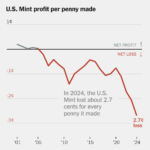Recent research looked at the prevalence of E. coli and other pathogens on organically grown vegetables. The research team was concerned with poultry litter compost and heat-treated poultry litter pellets used for organic fertilizer and soil amendments in speciality crop production and soil health management. “. . . such products… Continue Reading Science & Research, cantaloupe, cucumbers, E. coli, organic, poultry litter, radishes, research, spinach Food Safety News
Recent research looked at the prevalence of E. coli and other pathogens on organically grown vegetables.
The research team was concerned with poultry litter compost and heat-treated poultry litter pellets used for organic fertilizer and soil amendments in speciality crop production and soil health management.
“. . . such products may enhance survival and persistence of foodborne pathogens and their transfer to fresh produce,” the study authors wrote in an article in the Journal Frontiers.
The researchers studied the soil persistence and transfer of generic E. coli to cantaloupe, cucumbers, spinach and table radishes. They used a replicated 2-year randomized field-plot inoculated challenge study with poultry litter treatments and cover crop/soil placement.

The study looked at soil persistence/transfer of generic E. coli to organic cantaloupe, cucumbers, spinach and table radishes in cover cropped USDA National Organic Program (NOP) certified plots.
Amended soils were analyzed monthly for E. coli up through 90 to 120 days NOP required wait periods between poultry litter application and produce harvest. Cantaloupe, cucumber, spinach, and table radish, grown compliant with NOP standards, were assayed at harvest for pathogens (Salmonella, Listeria monocytogenes, Staphylococcus aureus) and generic E. coli.
All amended, inoculated soils were positive for the inoculated E. coli immediately after inoculation, according to the research report. At 90 days, all plot soils were positive for the inoculated generic E. coli rif-R. By 120 days, generic E. coli rif-R concentrations in soils declined significantly. No other pathogens (Salmonella, Listeria monocytogenes, Staphylococcus aureus) were detected at 0 or 90 days in plot soils.
Generic E.coli rif-R was detected on four of 16 cantaloupes, four of 16 cucumbers from APL plots; four of 20 radish bulbs from till incorporated and four from subsurface-applied APL tested positive for generic E. Coli rif-R at 90 days. By 120 days, only two spinach plants were positive from subsurface APL plots. No other pathogens or generic E. Coli rif-R were recovered for any crops in the study.
Significant, consistent declines and decreasing survival throughout the growing seasons in populations of inoculated E. coli in soil, resulted in very low detection on any unwashed produce by 90 and 100 dpi in accord with NOP manure amendment-to-harvest wait times, the researchers concluded.
Exposure to a combination of environmental conditions, including soil moisture, splash transfer of soil to produce, and temperatures of soil and air, impact E. coli populations in tilled and subsurface poultry litter product-amended soils and on produce managed in compliance with organic production requirements.
Researchers on the project were:
Patricia D Millner Senior Researcher Environmental Microbial and Food Safety Laboratory, Beltsville Agricultural Research Center, Agricultural Research Service (USDA) Beltsville, United States;
Fawzy Hashem Professor University of Maryland Eastern Shore Princess Anne, United States;
Annette Kenney Doctorate Student / Research Assistant University of Maryland Eastern Shore Princess Anne, United States;
Amy S. Collick Assistant Professor Morehead State University Morehead, United States;
Petrina McKenzie-Reynolds Vegetable Research, Agricultural Research Service (USDA), Charleston, South Carolina, United States;
Lurline Marsh University of Maryland Eastern Shore, Princess Anne, Maryland, United States;
Arthur Allen Professor University of Maryland Eastern Shore Princess Anne, United States;
Brett D. Smith University of Maryland Eastern Shore, Princess Anne, Maryland, United States;
Salina ParveenUniversity of Maryland Eastern Shore Princess Anne, United States.
(To sign up for a free subscription to Food Safety News,click here)








